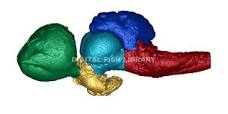Great White Shark
Search This Blog
Friday, January 6, 2012
Interesting facts
They are the largest predatory fish in the sea.
GWS lives for about 25 years.
A Great White Shark is capable of eating sea lions whole.
After a big meal, sharks can wait for up to three monthes with another.
In one year, a great white consumes 11 tons of food!
Adult sharks can swim up to 43 mph.
They have been around for 350 million years.
GWS lives for about 25 years.
A Great White Shark is capable of eating sea lions whole.
After a big meal, sharks can wait for up to three monthes with another.
In one year, a great white consumes 11 tons of food!
Adult sharks can swim up to 43 mph.
They have been around for 350 million years.
Respiratory System

Oxygen is extracted from the water by the gills. There are gill rakers perpendicular to the gills which direct the flow of water taken in through the mouth in the opposite direction to blood flow. The water taken in throught the moutg is discharged through five gill slits.
Nervous System
Central Nervous System
They have a brain with a cerebellum. Which accounts for 18% of the brain and whose function is highly controversial. The cerebellum is involved in coordination of target tracking and analysis of the consequence of the organism’s movement.

They have a brain with a cerebellum. Which accounts for 18% of the brain and whose function is highly controversial. The cerebellum is involved in coordination of target tracking and analysis of the consequence of the organism’s movement.

Thursday, January 5, 2012
Digestive System
|
Circulatory System
A shark's heart is a two-chambered S-shaped tube, small in proportion to body size. Blood flows from the heart to the gills and then to body tissues.
Closed Circulatory System
Closed Circulatory System
Subscribe to:
Posts (Atom)